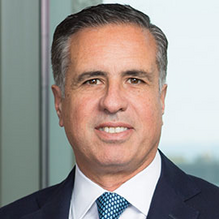JPMorgan Chase & Co.: Difference between revisions
AmaanAfridi (talk | contribs) (→Team) |
AmaanAfridi (talk | contribs) |
||
| Line 4: | Line 4: | ||
== Operations == | == Operations == | ||
=== How did the idea of the company come about? === | |||
=== What is the mission of the company? === | |||
=== What are the main offerings of the company? (what services?) === | |||
== Market == | == Market == | ||
Revision as of 01:15, 6 July 2023
Summary
JPMorgan Chase & Co. operates as a financial services company worldwide. It operates through four segments: Consumer & Community Banking (CCB), Corporate & Investment Bank (CIB), Commercial Banking (CB), and Asset & Wealth Management (AWM). The CCB segment offers s deposit, investment and lending products, payments, and services to consumers; lending, deposit, and cash management and payment solutions to small businesses; mortgage origination and servicing activities; residential mortgages and home equity loans; and credit card, auto loan, and leasing services. The CIB segment provides investment banking products and services, including corporate strategy and structure advisory, and equity and debt markets capital-raising services, as well as loan origination and syndication; payments and cross-border financing; and cash and derivative instruments, risk management solutions, prime brokerage, and research. This segment also offers securities services, including custody, fund accounting and administration, and securities lending products for asset managers, insurance companies, and public and private investment funds. The CB segment provides financial solutions, including lending, payments, investment banking, and asset management to small business, large and midsized companies, local governments, and nonprofit clients; and commercial real estate banking services to investors, developers, and owners of multifamily, office, retail, industrial, and affordable housing properties. The AWM segment offers multi-asset investment management solutions in equities, fixed income, alternatives, and money market funds to institutional clients and retail investors; and retirement products and services, brokerage, custody, trusts and estates, loans, mortgages, deposits, and investment management products. The company also provides ATM, online and mobile, and telephone banking services. JPMorgan Chase & Co. was founded in 1799 and is headquartered in New York, New York.
Operations
How did the idea of the company come about?
What is the mission of the company?
What are the main offerings of the company? (what services?)
Market
Total Addressable Market
Total Addressable Market: Here, the total addressable market (TAM) is defined as the global financial services market, and based on a number of assumptions, it is estimated that the size of the market, in terms of revenue, is $25.8 trillion.
Serviceable Available Market
Serviceable Available Market: Here, the serviceable available market (SAM) is defined as the global commercial banking market, and based on a number of assumptions, it is estimated that the size of the market, in terms of revenue, is $2.8 trillion.
Serviceable Obtainable Market
Serviceable Obtainable Market: Here, the serviceable obtainable market (SOM) is defined as the US commercial banking market, and based on a number of assumptions, it is estimated that the size of the market, in terms of revenue, is $1.1 trillion.
Competition
Team
Leadership
Chief Executive Officer
Jamie Dimon is the Chairman and CEO of JP Morgan - He became CEO in December 2005, and became Chairman in December 2006. He became COO and president of the joint company between Bank One and JP Morgan in July 2004. In March 2008, Dimon became a class A board member of the Federal Reserve Bank of New York. Dimon holds a BA in Psychology and Economics from Tufts University, and a MBA from Harvard Business School.
Chief Financial Officer
Jeremy Barnum is the Chief Financial Officer of JP Morgan and joined the firm in 1994, having held several leadership roles including head of Global Research for JP Morgan's Corporate and Investment Bank, and CFO and Chief of Staff for the bank from 2013 to 2021. Barnum holds a degree in Chemistry from Harvard College.
Chief Operating Officer
Daniel Pinto is the President and Chief Operating Officer of JP Morgan - He is also the CEO of its Corporate & Investment Bank. Pinto began as an analyst and foreign exchange trader at Manufacturers Hanover in 1983 and became head of sales for Chemical Bank in 1992. Pinto became global head of Emerging Markets in 2006, and then made co-head of Global Fixed Income for JP Morgan in 2009, before becoming the sole head in 2012. He became Co-President and COO in 2018, before becoming the sole President and COO in 2022. Pinto holds a degree in Public Accounting and Business Administration from Universidad Nacional de Lomas de Zamora.
Board of Directors
James Dimon
For information about James Dimon, see "Chief Executive Officer" section above.
Linda B. Bammann
Stephen B. Burke
Todd A. Combs
Alicia Boler Davis
Timothy P. Flynn
Alex Gorsky
Mellody Hobson
Michael A. Neal
Phebe N. Novakovic
Virginia M. Rometty
Financials
Risk
The principal risk factors that could adversely affect JPMorgan Chase’s business, results of operations, financial condition, capital position, liquidity, competitive position or reputation include:
•Regulatory risks, including the impact that applicable laws, rules and regulations in the highly-regulated and supervised financial services industry, as well as changes to or in the application, interpretation or enforcement of those laws, rules and regulations, can have on JPMorgan Chase’s business and operations; the ways in which differences in financial services regulation in different jurisdictions or with respect to certain competitors can negatively impact JPMorgan Chase’s business; the penalties and collateral consequences, and higher compliance and operational costs, that JPMorgan Chase may incur when resolving a regulatory investigation; the ways in which less predictable legal and regulatory frameworks in certain countries can negatively impact JPMorgan Chase’s operations and financial results; and the losses that security holders will absorb if JPMorgan Chase were to enter into a resolution.[1]
•Political risks, including the potential negative effects on JPMorgan Chase’s businesses due to economic uncertainty or instability caused by political developments.[1]
•Market risks, including the effects that economic and market events and conditions, governmental policies, changes in interest rates and credit spreads, and market fluctuations can have on JPMorgan Chase’s consumer and wholesale businesses and its investment and market-making positions and on JPMorgan Chase’s earnings and its liquidity and capital levels.[1] Due to the high inflation rate, central banks of 28 counties has increased interest rates and planned to rise interest rate by the end of 2023 continuously. However, this will accompany more economic weakness, an increase in unemployment, market volatility, a decline in levels of risky assets, and a fall in inflation. This is a downside risk in the near term. [1] However, in long term, central banks will likely be forced to pivot and signal cutting interest rates sometime next year, which should result in a sustained recovery of asset prices and subsequently the economy by the end of 2023
•Credit risks, including potential negative effects from adverse changes in the financial condition of clients, customers, counterparties, custodians and central counterparties; and the potential for losses due to declines in the value of collateral in stressed market conditions or from concentrations of credit and market risk.[1]
•Liquidity risks, including the risk that JPMorgan Chase’s liquidity could be impaired by market-wide illiquidity or disruption, unforeseen liquidity or capital requirements, the inability to sell assets, default by a significant market participant, unanticipated outflows of cash or collateral, or lack of market or customer confidence in JPMorgan Chase; the dependence of JPMorgan Chase & Co. on the cash flows of its subsidiaries; the adverse effects that any downgrade in any of JPMorgan Chase’s credit ratings may have on its liquidity and cost of funding; and potential negative impacts, including litigation risks, associated with the transition to alternative reference rates.[1]
•Capital risks, including the risk that any failure by or inability of JPMorgan Chase to maintain the required level and composition of capital, or unfavourable changes in applicable capital requirements, could limit JPMorgan Chase’s ability to distribute capital to shareholders or to support its business activities.[1]
•Operational risks, including risks associated with JPMorgan Chase’s dependence on its operational systems, its ability to maintain appropriately-staffed workforces and the competence, integrity, health and safety of its employees, as well as the systems and employees of third parties, market participants and service providers; the potential negative effects of failing to identify and address operational risks related to the introduction of or changes to products, services and delivery platforms; legal and regulatory risks related to safeguarding personal information; the harm that could be caused by a successful cyber attack affecting JPMorgan Chase or by other extraordinary events; risks associated with JPMorgan Chase’s risk management framework, its models and estimations and associated judgments used in its stress testing and financial statements, and controls over disclosure and financial reporting; and potential adverse effects of failing to comply with heightened regulatory and other standards for the oversight of vendors and other service providers.[1]
•Strategic risks, including the damage to JPMorgan Chase’s competitive standing and results that could occur if management fails to develop and execute effective business strategies; risks associated with the significant and increasing competition that JPMorgan Chase faces; and the potential adverse impacts of climate change on JPMorgan Chase’s business operations, clients and customers.[1]
•Conduct risks, including the negative impact that can result from the actions or misconduct of employees, including any failure of employees to conduct themselves in accordance with JPMorgan Chase’s expectations, policies and practices.[1]
•Reputation risks, including the potential adverse effects on JPMorgan Chase’s relationships with its clients, customers, shareholders, regulators and other stakeholders that could arise from employee misconduct, security breaches, inadequate risk management, compliance or operational failures, litigation and regulatory investigations, failure to satisfy expectations concerning environmental, social and governance concerns, failure to effectively manage conflicts of interest or to satisfy fiduciary obligations, or other factors that could damage JPMorgan Chase’s reputation.[1]
•Country risks, including potential impacts on JPMorgan Chase’s businesses from an outbreak or escalation of hostilities between countries or within a country or region; and the potential adverse effects of local economic, political, regulatory and social factors on JPMorgan Chase’s business and revenues in certain countries.[1]
•People risks, including the criticality of attracting and retaining qualified and diverse employees; and the potential adverse effects of unfavourable changes in immigration or travel policies on JPMorgan Chase’s workforce.[1]
•Legal risks, including those relating to litigation and regulatory and government investigations.[1]


